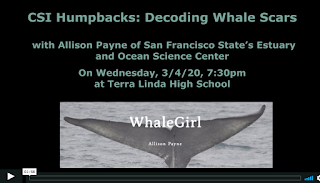En-Ya Zhang is a Sophomore at Terra Linda High School. She is part of MSEL's Transportation Team. In order to reduce greenhouse gas emissions in Marin County, En-Ya and her team advocate for people to use public transportation.
1. What made you interested in learning about transportation?
When choosing our topics, all of us saw some improvements that could be made in the transportation system in our community, especially since some of us have ridden MarinTransit or SMART before. In the United States, transportation - cars, buses, trains, planes, trucks, and more - account to the majority of greenhouse gas emissions in the country ( about 29% .) Our overall goal was to try to influence these emissions and make an impact in our community. We wanted to learn about the history of public transit in Marin and use this information to boost public transportation ridership in our community. All of us have had our own experiences riding public transit, in Marin and outside Marin, and these experiences definitely made the topic of transportation more appealing to us. Our exposure to transit system gave us the ability to analyze the faults and disadvantages within agencies in Marin, and brainstorm our own solutions to them.
2. What interesting facts have you found about transportation?
Overall, our group learned a multitude of interesting facts about transportation, whether it be local or global information. We learned that the Bay Area alone has 27 different transit agencies that do their best to hold up the transportation systems. At one point, there were plans to introduce a high speed rail into California, but these plans fell through due to a lack of sufficient funding and sponsors. MarinTransit, which runs the buses in Marin, has only two electric buses due to their high prices. Originally, Marin County was included in the plans for BART, however, these plans fell through due to a great deal of controversy. Not only did Marin feel like it lacked funding, but many were worried about the idea of setting the tracks under the Golden Gate Bridge, which they believed would ruin the historical landmark. When it comes to more global information, we learned that recently, Luxembourg made all public transit free to its citizens, and Norway's electric vehicle benefits have fueled high buyer rates within the country.
3. What projects are you currently working on involving transportation research?
The main project our group focussed on was a policy that we plan to introduce in this community. Throughout the project, we brainstormed a series of different ideas and finally settled on a couple of free fare days that would fall on April 22 (Earth Day), and Election Day. Our group has attended a couple of meetings to plan and finalize this policy, and we have already communicated with MarinTransit. The final task would be for us to present our policy proposal to the MarinTransit Board of Directors, and a meeting date was scheduled. Unfortunately, this presentation has been postponed due to the COVID-19 lockdown, and a new date has yet to be decided. However, we are confidant that we may be able to introduce out policy into the community and have it in action by November of 2020.
4. How can people utilize transportation in a way that will protect the environment?
Public transportation is inevitably the most environmentally-friendly transit choice, as it diminished the amount of greenhouse gas emissions per rider. This would include buses, trains, subways, planes, and a few other methods of transit. Agencies try to integrate each mode to make public transportation as efficient and helpful as possible, but its nearly impossible to satisfy the needs of every rider in an entire community. In addition to this, public transportation can sometimes be pricey, or it simply isn't the most reasonable choice to make. For those who are in such a situation and would like to make an impact on emissions, we would suggest carpooling, biking, or walking. Obviously, biking and walking would produce the fewest emissions, however they aren't always the optimal choice, and in that case, carpooling would still reduce the emissions per person, although no significantly.
5. How can we encourage people to walk and bike more to places?
We learned from Norway's electric vehicle policy that oftentimes, the most effective way to influence the public's decisions is to provide them with benefits. For many, walking and biking from Point A to Point B isn't worth the extra time of the extra effort. That is by far the biggest obstacle when it comes to promoting such habits and transportation methods, especially when it comes to commuters that have to travel miles everyday. Such people would benefit more from riding public transportation, as it fits better with their daily schedules and needs. However, in school zones, there is much to be done to increase the use of bikes and the number of walkers. Many schools already have special days set aside to promote these modes of transport, and encourage it by handing out prizes. However, increasing the sizes of the bike lanes could make it more prominent in our community, as many parents might be worried about the safety of their children. This would provide bikers with more space, and could increase the number of students that ride their bike to school instead of private vehicles.

















